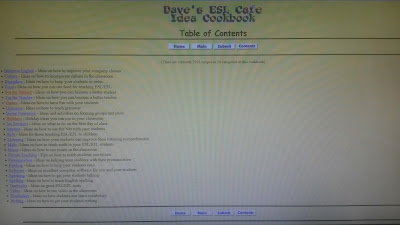- ESOL Standards (Florida)
- Intended audience: Educators
- The five ESOL Standards for Florida students are listed on this website. They are for all Kindergarten through 12th grade students. They were last adopted or revised in June of 2014. Language of Language Arts, Language of Mathematics, Language of Science, Language of Social and Instructional Purposes, and Language of Social Studies are included.
- TESOL International Association Standards
- Intended audience: Educators
- The TESOL website provides useful information on improving the teaching of the English language. Included are PreK-12 English Language Standards, Proficiency Standards, Technology Standards, TESOL/CAEP Standards for P-12, Teacher Education Programs, Standards for Adult Education, Common Core State Standards and English Learners, guidelines for developing EFP, and Professional Teaching Standards. A free issue of TESOL Quarterly is available along with countless other resources.
- Vogt, M., & Echevarria, J. J. (2007). 99 Ideas and Activities for Teaching English Learners with the SIOP Model. Boston, MA: Pearson.
- Intended audience: Educators
- 99 Ideas and Activities for Teaching English Learners with the SIOP Model is a helpful resource book for teachers. Research based techniques for lessons are provided and explained and include the eight SIOP components. The ideas throughout the book promote and encourage student-to-student and teacher-to-student interaction and involvement. Step-by-step directions, examples of objectives, and 12 sample lessons are included in this book.

Multicultural Awareness and Resources
- Multicultural Literature Anthology
- Intended audience: Educators, students, parents
- This is a blog I wrote that contains a great variety of multicultural literature recommendations and resources; the literature is all suitable for various elementary grades. There are multiple African American, Asian, Jewish, Latino, and Native American book recommendations. A summary of each book and any awards the book or author received is included along with various other practical resources that can be utilized in the classroom. Some books contain a reading of the book (youtube), an interview with the author, authors/illustrator's websites, lesson ideas, additional information about the featured culture, and many more.

- Rapid Immigration
- Rapid Immigration is a website that offers a wealth of information and various resources concerning immigration, lessons in American Civics, stories about coming to America, the latest immigration news and articles, Green Cards, Visas, Passports, Citizenship, US History, Resources are suitable for students and adults. They offer a free United States Immigration guide available for download.
- Teaching for Change
- This websites offers a variety of resources for teachers and parents to "create schools where students learn to read, write, and change the world." Teaching for Change encourages educators and students to "question and re-think the world inside and outside their classrooms, build a more equitable, multicultural society, and become active global citizens." Some of the available resources include anti-bias teaching, parent engagement, training and professional development, community building, accurate teaching of history, and multicultural books and recommended book lists.
- Teaching Tolerance
- Teaching Tolerance is put out by Southern Poverty Law Center. They offer a free subscription to their magazine and free educational kits for teachers, librarians, school counselors, administrations, professors, youth directors, and employees of youth-serving nonprofit organizations. They have a blog, weekly newsletters, list of various publications, classroom resources, and professional development resources available on their website. Teaching Tolerance's Perspectives for a Diverse America is a "literacy-based curriculum that marries anti-bias social justice content with the rigor of the Common Core State Standards."
Games and Activities
- ESL Children's Drama Games
- Intended audience: Educators
- The ESL Children's Drama Games is a teaching blog that contains creative ideas for teachers of English Language Learners (ELLs) that are between the ages of 4 and 10. The author of the blog has included videos of herself teaching parts of lessons in some of her posts. In addition, there are lessons, games, activities, and many resources included throughout the blog. The hands-on, interactive lessons, many of which include songs and rhymes are sure to prove helpful to teachers of younger ELLs.

- Dave's ESL Cafe Idea Cookbook
- This website include a long list of activities, games, ideas on how to teach various subjects (spelling, reading, math, writing), and a variety of others ideas that will prove helpful to teachers teaching English Language Learners (ELLs). The ideas on the websites are a compilation of ideas sent it from teachers from around the world.
Local Resources
- Adult ESOL Classes (Milton, Florida and Navarre, Florida)
- Intended audience: Adult English Language Learners
- Being offered to adults who are non-native English speakers are English for Speakers of Other Languages (ESOL) classes locally in Milton and Navarre, Florida. The objectives for this particular class are to provide instruction in reading, writing, and speaking English as well as help students function more effectively in their daily lives and within the community. Classes are offered throughout the year. To register, one can contact Santa Rosa Adult School's Adult Learning Center at (850) 983-5165.








